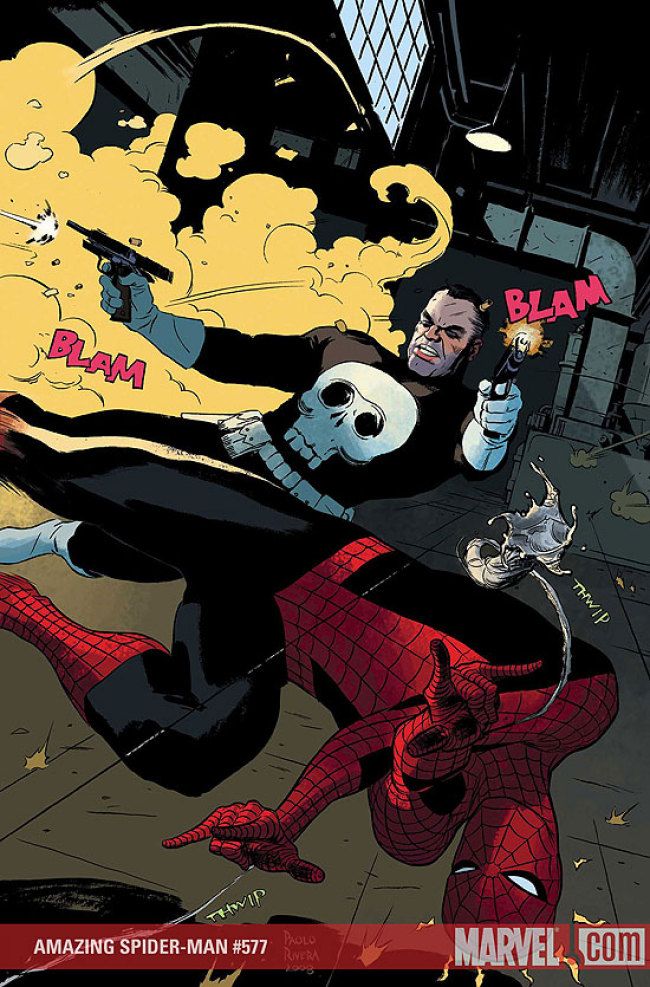These days, it seems like there's a rather singular driving force behind the lion's share of the most popular mainstream comics: The big events, the broad and all encompassing disruptions to the status quo. Heck, even this new-blooded approach to "The Amazing Spider-Man" started with just such a "game changer".
We all know how that went down. It's been long enough now where we can just take the book on its own merits. And the big surprise here is that Marvel took what is arguably it's most beloved franchise character and, instead of giving him a new costume or killing off a loved one or retconning his origin (okay, scratch that last one), they instead completely shifted the tone of the book into, frankly, something remarkably non-mainstream.
While there have been traditionally minded storylines in the post-"One More Day" Spider-verse, there have been even more stories that can easily be described as visually and narratively risk taking. This issue is just such an example. On paper, it's another storied Punisher crossover, featuring your typical moral quandaries and seriouser-than-usual-because-you-know-this-guy's-a-murderer-and-everything banter. But just a quick glance at the cover tells you that Marvel is not afraid to take chances with the biggest character they publish.
Zeb Wells is certainly a delightful writer when at his best, but it's the art of Paolo Rivera that is the most eye opening aspect of this story. A cross between Paul Pope and Gabriel Ba, his artwork is completely unconventional for a mainstream super-hero title. Just look at his redesign of The Punisher's trademark skull costume. His style is light, it's dynamic, and most amazingly, it works. Rivera's linework wouldn't look at all out of place in a "MOME" anthology or a volume of "Flight", so it's a true testament to Marvel's willingness to truly build a self-contained universe for Spider-Man that such an interesting talent is allowed to just cut loose on what was always supposed to be the funnest superhero book on the stands.
The more traditional aspects of the "Brand New Day" aesthetic is represented in an interlude by Joe Kelly and Barry Kitson, which sends the ongoing Spider-Murderer plot just a touch further along its path. It might not have as much flair, sure, but it's another example of how small scale stories are allowed to flourish in this book. It's not the Sinister Six piledriving the Whitestone Bridge, it's just a small scale Bookie trying to solve a crime, slowly getting in over his head.
Overall, "The Amazing Spider-Man" has really turned into a bright, innovative, and refreshing read. It's also, just as remarkably, done a fantastic job of staying on its almost weekly schedule with no dips or sudden shifts in quality. In the midst of a 12-month long Summer Event that threatens to swallow the very foundations of Superhero Storytelling, Marvel has created an oasis in Spider-Man's secure and always surprising corner of the five boroughs.

